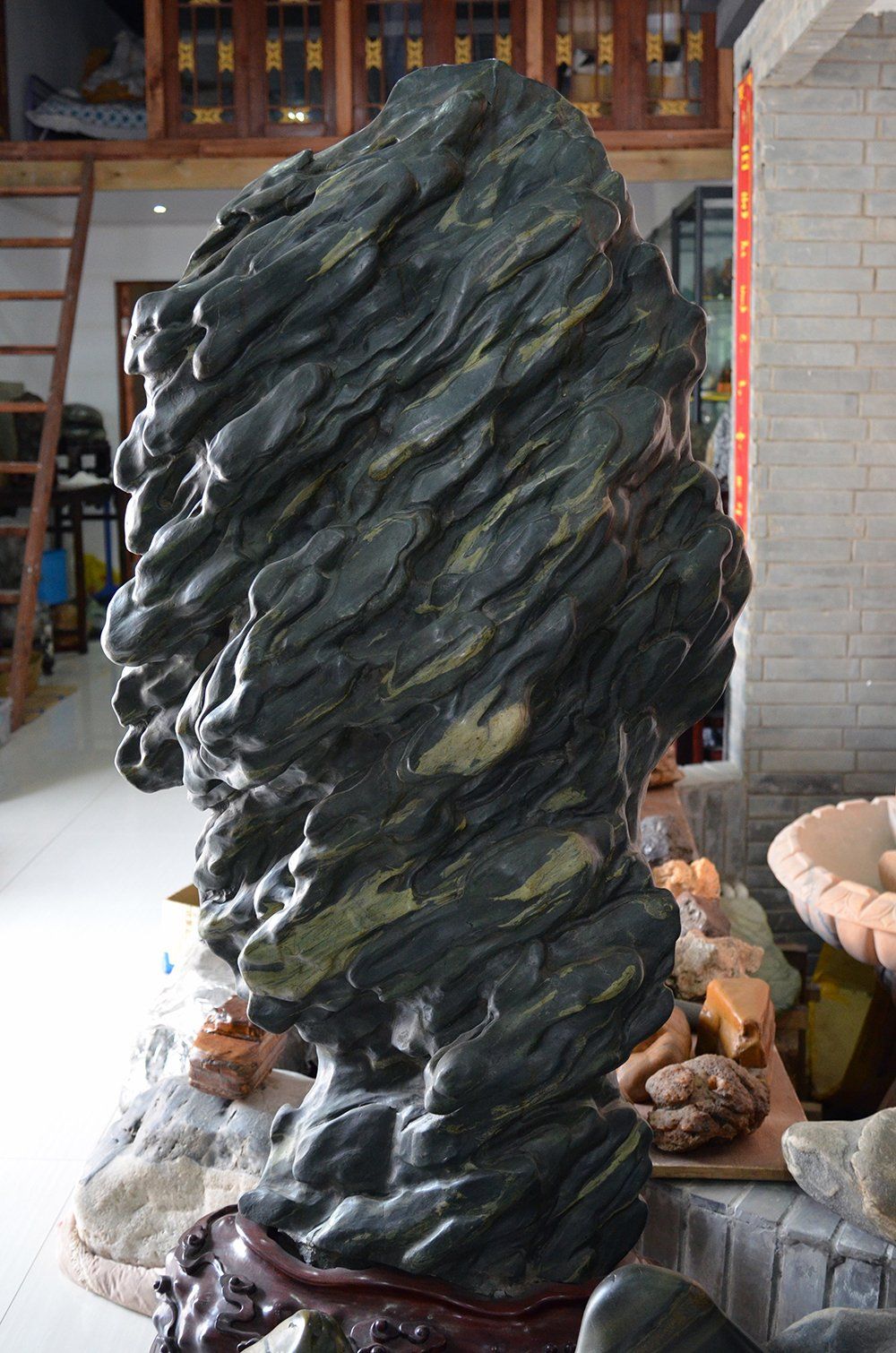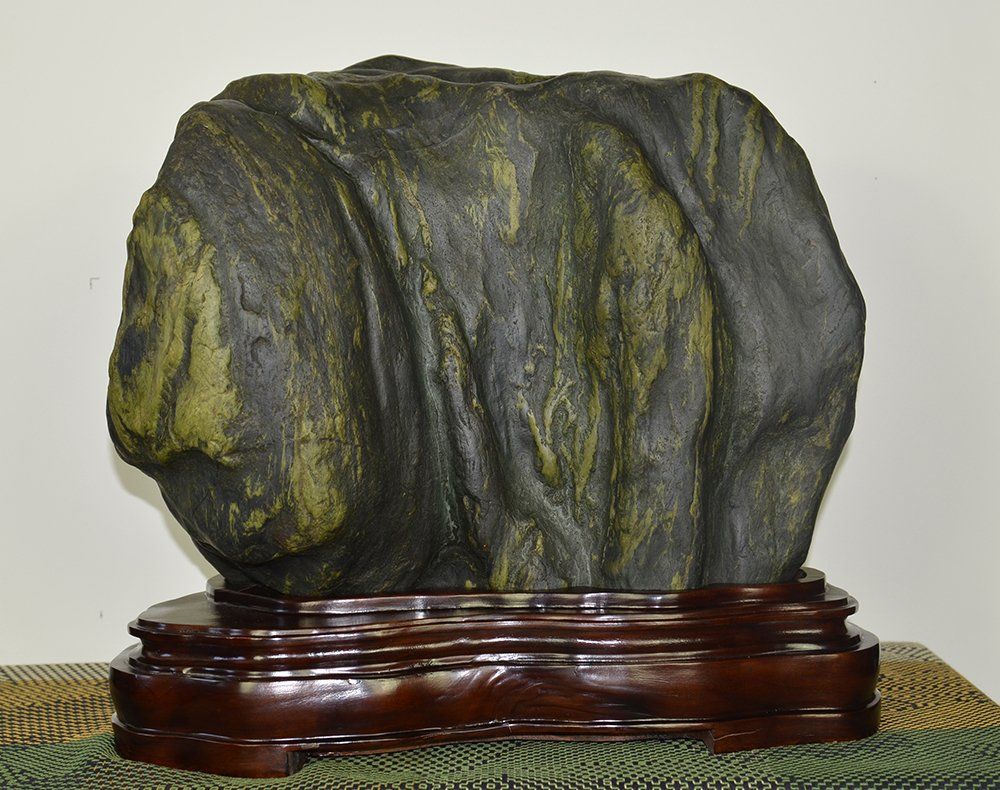Chinese Pan Gong Shi-Ancient and Beautiful
Information about Dark Greenish Stones from Gansu
By Thomas S. Elias, July, 2014
Pan Gong Shi are beautiful dark green to black stones often with an irregular wavy surface texture and have a primarily serpentine pattern with jade streaks. They may appear to be moist because of their color.
Pan Gong stones originate in Gansu province in the Shaohau Mountain Valley and Ox Head River area in Qingshui County. They are seldom seen in stone markets in China, and are scarce outside of China. As a result, excellent Pan Gong stones can be expensive.
The use of these stones for their beauty dates back to Imperial China; some Chinese scholars of stone appreciation trace them back nearly 900 years to the writings of 12th century stone connoisseur Tu Wan (Du Wan). This was the first book published solely to describe stones that were collected and valued for their aesthetic features. One hundred forty stones were described, some easy to recognize today, while others are nearly impossible to trace to modern stones. Some specialists consider Pan Gong stones to be the #58 entry in Tu Wan’s Stone Catalog of Cloudy Forest, a book written between 1126-1130 CE.
The stone is not mentioned in many of the Western-produced English language books about Chinese stones. This omission may be because they are not readily available and are not commonly known among stone connoisseurs as are the common Lingbi, Taihu, and Ying stones. Thus, they are not ideal for dealers involved in the export and resale in Western markets.
The Gansu Province serpentine rocks are very similar in appearance to some serpentine stones found in northern California and in coastal regions of the Pacific Northwest areas of North America.
There are many legends and myths associated with a well-known Song Dynasty monk named Pan Yun (庞蕴). He lived a life of solitude near Ox Head River and was well liked. As legend has it, he probably acquired through tributes, or possibly collected, many stones, minerals, and jade objects Thus, these dark stones acquired the name Pan Gong shi ( 庞公石) or Pan Gong Yu (庞公玉). The latter name can also be written as Pan Gong Jade. Assuming the legends are at least partly true —that these tribute stones were given to respected monks—but they can rightfully be called Gongshi or Tribute stones.



